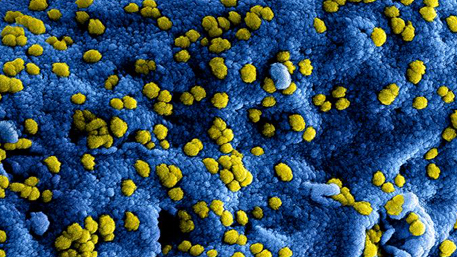
Researchers face hurdles to evaluate, synthesize COVID-19 evidence at top speed
J Brainard, Science, October 8, 2020
J Brainard, Science, October 8, 2020
To avoid out-of-date reviews, several groups have been developing an approach little used before the pandemic: “living reviews” they plan to update as new relevant studies emerge. Each review update, like the original review, requires rigorously searching for relevant papers—and considering whether to rework the conclusions to account for new findings.
Clinical impact of molecular point-of-care testing for suspected COVID-19 in hospital (COV-19POC): a prospective, interventional, non-randomised, controlled study
NJ Brendish et al, Lancet Resp Medicine, October 8, 2020
NJ Brendish et al, Lancet Resp Medicine, October 8, 2020
This is a prospective, interventional, non-randomized, controlled study of molecular point-of-care testing in patients aged 18 years or older presenting with suspected COVID-19. Point-of-care testing was associated with large reductions in time to results and could lead to improvements in infection control measures and patient flow compared with centralized laboratory PCR testing.
Prediction models for COVID-19 clinical decision making
AM Leuwenberg et al, Lancet Digital Health, October 8, 2020
AM Leuwenberg et al, Lancet Digital Health, October 8, 2020
Prediction models that combine patient and disease characteristics to estimate the risk of a poor outcome from COVID-19 can provide helpful assistance in clinical decision making. Critical appraisal of existing models was recently done, concluding that use of any of reported prediction models was not recommended in current practice.
Is Particulate Matter of Air Pollution a Vector of Covid-19 Pandemic?
T Barakat, Cell Matter, October 7, 2020
T Barakat, Cell Matter, October 7, 2020
Fine particulate matter (PM) generated from combustion engines have been described as toxic to human health. Recent events stressed that high concentrations of PM of air pollution might favor the spread of SARS-CoV-2. Elucidating the role of PM of air pollution in the spread of the virus is thus urgent and crucial.
Large-scale Multi-omic Analysis of COVID-19 Severity
KA Overmeyer et al, Cell Systems, October 7, 2020
KA Overmeyer et al, Cell Systems, October 7, 2020
We surveyed biomolecules in 102 COVID-19 and 26 non-COVID-19 patient blood samples. We found 219 biomolecules strongly associated with COVID-19 status and severity. We observed pronounced dysregulation of lipid transport and neutrophil degranulation.
SARS-CoV-2 disrupts splicing, translation, and protein trafficking to suppress host defenses
AK Banerjee et al, Cell, October 8, 2020
AK Banerjee et al, Cell, October 8, 2020
We define the interactions between SARS-CoV-2 proteins and human RNAs. NSP16 binds to the mRNA recognition domains of the U1 and U2 splicing RNAs and acts to suppress global mRNA splicing upon SARS-CoV-2 infection. NSP1 binds to 18S ribosomal RNA in the mRNA entry channel of the ribosome and leads to global inhibition of mRNA translation upon infection. Finally, NSP8 and NSP9 bind to the 7SL RNA in the Signal Recognition Particle and interfere with protein trafficking to the cell membrane upon infection. Disruption of each of these essential cellular functions acts to suppress the interferon response to viral infection. Our results uncover a multipronged strategy utilized by SARS-CoV-2 to antagonize essential cellular processes to suppress host defenses.





















.png)












No hay comentarios:
Publicar un comentario